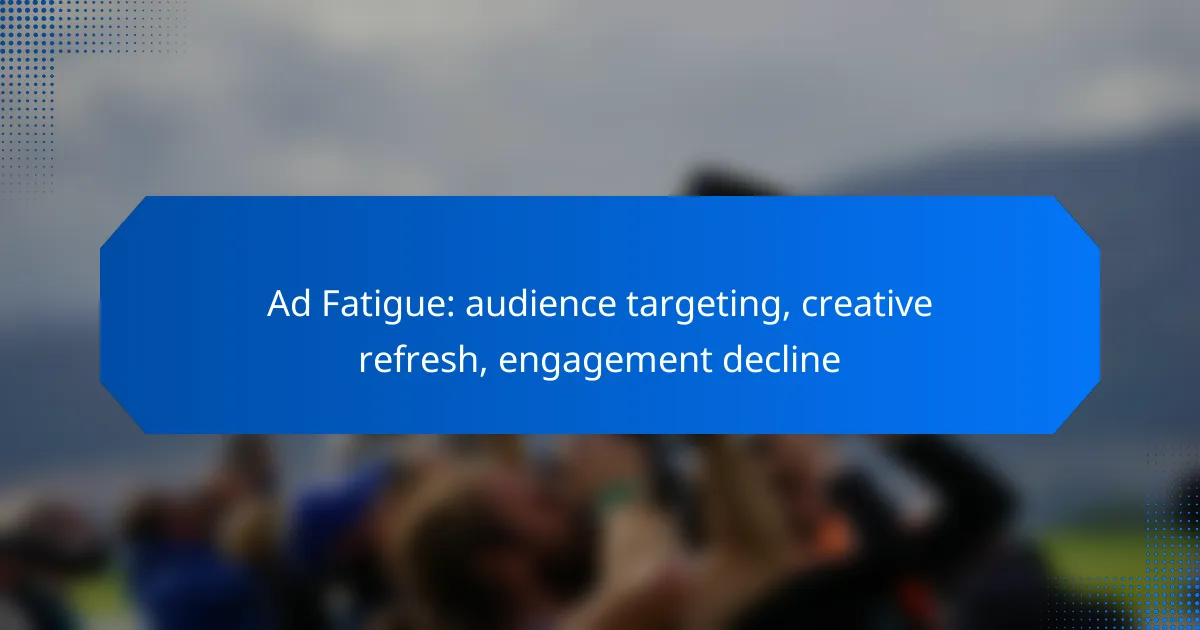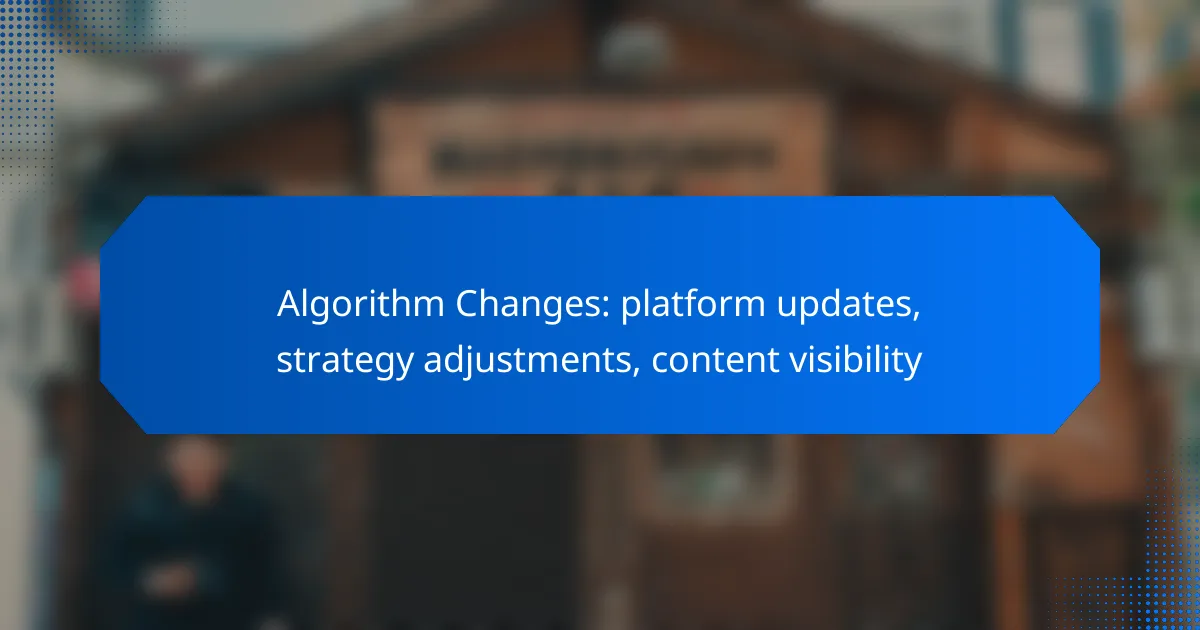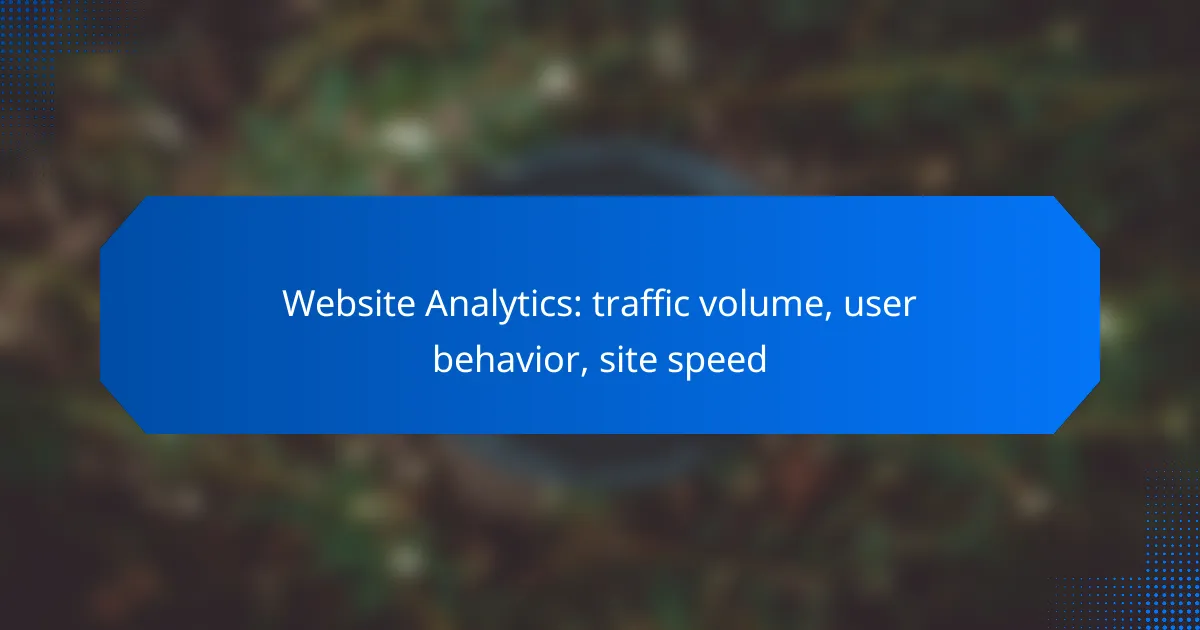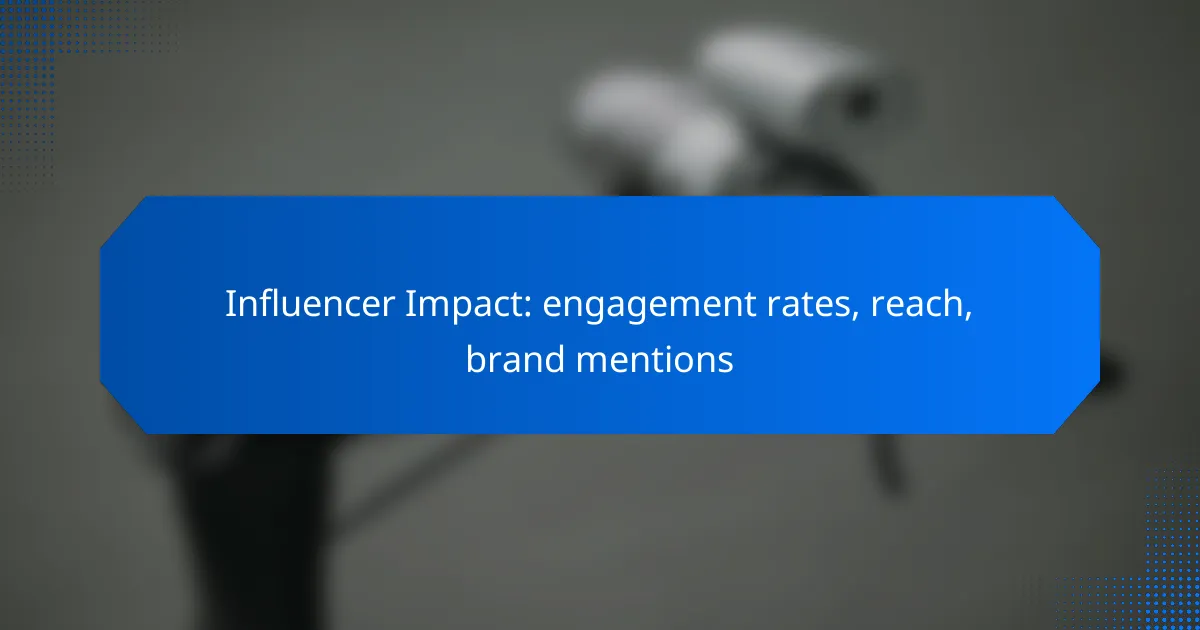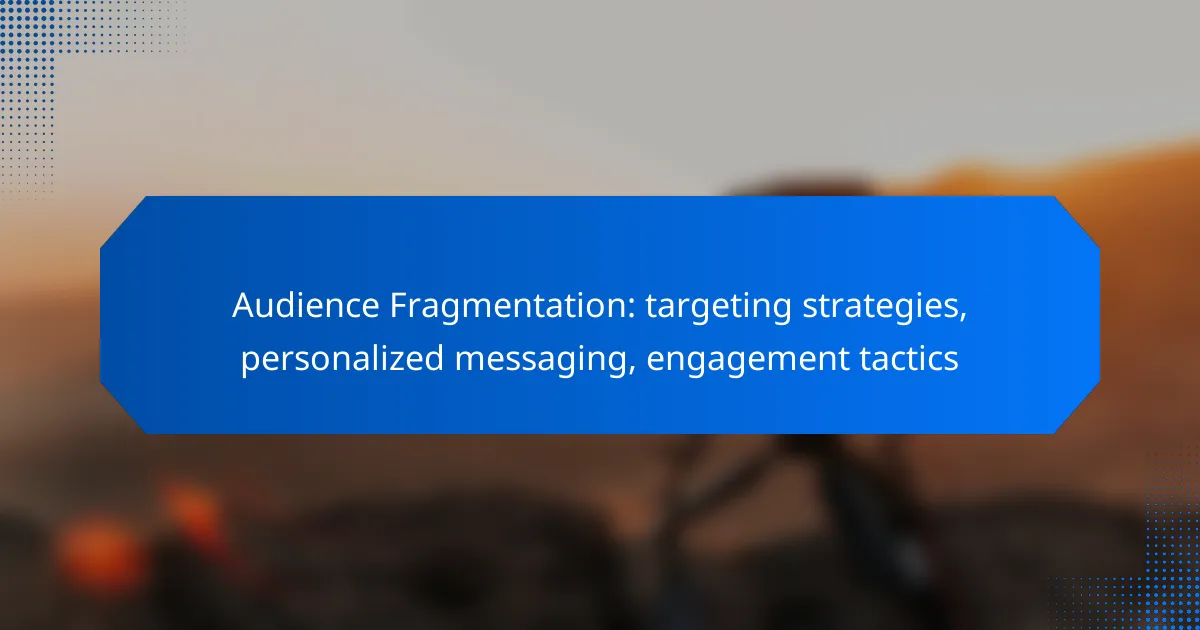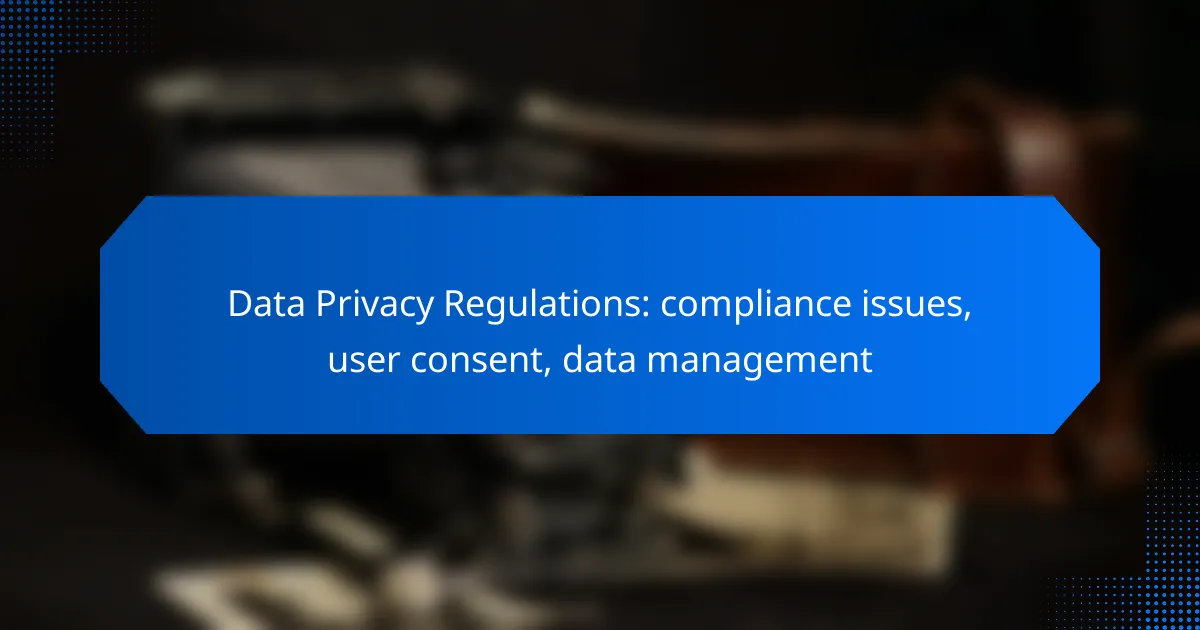In today's digital landscape, effective marketing strategies are essential for businesses to connect with consumers. This guide explores various digital marketing techniques, including content marketing, SEO, and social media advertising, tailored specifically for the Australian market. By understanding your audience and aligning your efforts with business goals, you can create a comprehensive digital marketing plan that drives engagement and success.
Ad Fatigue: audience targeting, creative refresh, engagement decline
Ad fatigue is a common challenge faced by marketers, characterized by a decline in audience engagement due to overexposure to repetitive advertisements. To effectively combat this issue, it is essential to refine audience targeting, refresh creative content, and closely analyze engagement metrics. By implementing these strategies, brands can sustain user interest and enhance overall ad […]
Algorithm Changes: platform updates, strategy adjustments, content visibility
The latest algorithm changes in Australia have a profound effect on content ranking and visibility across search engines. To navigate these updates successfully, content creators must refine their strategies by enhancing content quality, optimizing SEO practices, and leveraging data analytics tools. What are the latest algorithm changes affecting content visibility in Australia? The latest algorithm […]
Website Analytics: traffic volume, user behavior, site speed
Website analytics play a crucial role in understanding traffic volume, user behavior, and site speed. By leveraging tools to track user visits and engagement, businesses can optimize their advertising strategies and improve return on investment. Additionally, analyzing key metrics such as bounce rate and site speed can enhance user experience, leading to higher engagement and […]
Influencer Impact: engagement rates, reach, brand mentions
Influencer marketing has become a pivotal strategy for brands seeking to enhance their visibility and engagement. Key metrics such as engagement rates, reach, and brand mentions play a significant role in evaluating the effectiveness of influencer partnerships. In Australia, understanding these metrics allows brands to tailor their campaigns for maximum impact and audience interaction. How […]
Affiliate Marketing: commission structures, partner selection, performance analysis
Affiliate marketing is a dynamic strategy that allows businesses to leverage partnerships for increased sales and brand exposure. Understanding commission structures is crucial, as they dictate how affiliates earn and can significantly impact both earnings and costs. Additionally, selecting the right partners and conducting thorough performance analysis are essential for maximizing the effectiveness of affiliate […]
SEO Performance: keyword rankings, organic traffic, bounce rates
Effective SEO performance hinges on optimizing keyword rankings, boosting organic traffic, and minimizing bounce rates. By focusing on relevant search terms and enhancing user experience, businesses can improve their visibility and engagement. Implementing strategies such as quality content creation and user-friendly design is essential for attracting and retaining visitors. How to improve keyword rankings in […]
Audience Fragmentation: targeting strategies, personalized messaging, engagement tactics
In today’s fragmented audience landscape, effective targeting strategies are essential for businesses looking to connect with diverse consumer segments. By employing behavioral targeting and demographic segmentation, companies can tailor their marketing efforts to meet specific needs, enhancing engagement and conversion rates. Personalized messaging further strengthens this connection by making communication more relevant, while interactive engagement […]
Lead Generation Metrics: funnel analysis, lead scoring, conversion paths
Understanding lead generation metrics is crucial for optimizing marketing strategies and improving conversion rates. By employing funnel analysis, businesses can pinpoint where potential customers drop off in the buying process, while lead scoring helps prioritize leads based on their likelihood to convert. These insights enable companies to refine their approaches and attract more qualified leads […]
Data Privacy Regulations: compliance issues, user consent, data management
Data privacy regulations play a critical role in safeguarding personal information and ensuring organizations adhere to legal standards. Compliance involves implementing proactive measures such as regular audits, data protection policies, and employee training to manage user consent effectively. Understanding these regulations is essential for organizations to navigate the complexities of data management while respecting individual […]
Traffic Sources: organic, paid, referral
Understanding traffic sources is crucial for any online business, as they directly impact visibility and engagement. Organic traffic, driven by SEO and valuable content, helps establish a strong online presence, while paid traffic utilizes targeted advertising to reach specific audiences effectively. Additionally, referral traffic enhances reach through strategic partnerships and collaborations, creating opportunities for increased […]
What are effective digital marketing strategies in Australia?
Effective digital marketing strategies in Australia focus on leveraging various online channels to reach and engage consumers. Key strategies include content marketing, search engine optimization, social media advertising, email marketing, and pay-per-click advertising, each tailored to the local market's preferences and behaviors.
Content marketing for brand awareness
Content marketing is essential for building brand awareness in Australia. It involves creating valuable and relevant content that resonates with your target audience, such as blog posts, videos, and infographics.
To maximize impact, focus on local topics and trends that matter to Australians. For example, using Australian slang or referencing local events can enhance relatability. Consistency in publishing is also crucial; aim for a regular schedule to keep your audience engaged.
Search engine optimization for visibility
Search engine optimization (SEO) enhances your website's visibility on search engines like Google. In Australia, optimizing for local search terms is vital, as many consumers search for services and products nearby.
Key steps include conducting keyword research to identify popular search terms, optimizing on-page elements like titles and meta descriptions, and ensuring your site is mobile-friendly. Regularly updating content and building backlinks from reputable Australian sites can further improve your rankings.
Social media advertising for engagement
Social media advertising is a powerful tool for engaging Australian consumers. Platforms like Facebook, Instagram, and LinkedIn allow for targeted advertising based on demographics, interests, and behaviors.
To effectively engage, create visually appealing ads that reflect Australian culture and values. Consider running promotions or contests to encourage interaction. Monitor performance metrics to refine your strategy and improve engagement rates over time.
Email marketing for retention
Email marketing is crucial for retaining customers in Australia. It allows businesses to communicate directly with their audience, providing updates, promotions, and personalized content.
Segment your email list based on customer preferences and behaviors to tailor your messages. Aim for a balance between informative and promotional content, and ensure compliance with Australian spam regulations by obtaining consent before sending emails.
Pay-per-click advertising for immediate traffic
Pay-per-click (PPC) advertising delivers immediate traffic to your website by placing ads on search engines and social media platforms. In Australia, Google Ads and Facebook Ads are popular choices for PPC campaigns.
Set a clear budget and define your target audience to maximize ROI. Regularly analyze campaign performance to adjust bids and ad copy. Consider using local keywords to attract Australian customers effectively.
How to choose the right digital marketing strategy?
Choosing the right digital marketing strategy involves understanding your target audience, evaluating your budget, and analyzing competitor approaches. This ensures that your efforts align with your business goals and resonate with potential customers.
Assess target audience demographics
Understanding your target audience demographics is crucial for selecting an effective digital marketing strategy. Consider factors such as age, gender, location, income level, and interests to tailor your messaging and channels accordingly.
For example, if your audience is primarily young adults, platforms like Instagram or TikTok may be more effective than LinkedIn. Utilize tools like Google Analytics or social media insights to gather data on your audience's characteristics.
Evaluate budget constraints
Budget constraints play a significant role in determining which digital marketing strategies are feasible. Assess how much you can allocate to various channels, including social media, SEO, content marketing, and paid advertising.
As a rule of thumb, small businesses often allocate around 7-10% of their revenue to marketing. Prioritize strategies that offer the best return on investment, and be prepared to adjust your budget based on performance metrics.
Analyze competitor strategies
Analyzing competitor strategies helps identify what works in your industry and where you can differentiate. Look at their online presence, content types, and engagement levels across various platforms.
Tools like SEMrush or Ahrefs can provide insights into competitors' keywords, traffic sources, and backlink profiles. This information can guide your strategy by highlighting gaps in the market or successful tactics that you can adapt for your own brand.
What are the key components of a digital marketing plan?
A digital marketing plan consists of several key components that work together to achieve online marketing goals. These components include market research, goal setting, budget allocation, and performance metrics, which collectively guide strategy and execution.
Market research and analysis
Market research and analysis involve gathering data about your target audience, competitors, and industry trends. This information helps identify customer needs, preferences, and behaviors, which are crucial for tailoring marketing strategies.
Utilize surveys, focus groups, and online analytics tools to collect relevant data. For instance, platforms like Google Analytics can provide insights into website traffic and user demographics, helping you make informed decisions.
Setting measurable goals
Setting measurable goals is essential for tracking the success of your digital marketing efforts. Goals should be specific, achievable, relevant, and time-bound (SMART), allowing for clear evaluation of performance.
For example, a goal might be to increase website traffic by 30% within six months. This clarity helps in aligning strategies and resources effectively to meet the desired outcomes.
Budget allocation
Budget allocation refers to distributing financial resources across various digital marketing channels and activities. A well-planned budget ensures that you invest wisely in areas that yield the highest returns.
Consider allocating funds based on past performance and projected ROI. For instance, if social media ads have historically driven significant traffic, prioritize that channel in your budget. Aim for a balanced approach, typically dedicating around 20-30% of your budget to testing new strategies.
Performance metrics and KPIs
Performance metrics and key performance indicators (KPIs) are essential for measuring the effectiveness of your digital marketing plan. These metrics provide insights into how well your strategies are performing against your goals.
Common KPIs include conversion rates, click-through rates, and customer acquisition costs. Regularly review these metrics to identify trends and make necessary adjustments to optimize your marketing efforts. Aim for monthly evaluations to stay agile and responsive to changes in performance.
What tools can enhance digital marketing efforts?
Several tools can significantly improve digital marketing efforts by providing insights, streamlining processes, and enhancing engagement. Key tools include analytics platforms, social media management software, and email marketing services that cater to different aspects of digital marketing.
Google Analytics for tracking
Google Analytics is a powerful tool for tracking website performance and user behavior. It allows marketers to analyze traffic sources, user demographics, and engagement metrics, helping to refine marketing strategies based on real data.
To effectively use Google Analytics, set up goals to measure conversions and utilize custom dashboards for quick insights. Regularly review reports to identify trends and areas for improvement, ensuring your marketing efforts align with user behavior.
Hootsuite for social media management
Hootsuite is a comprehensive platform for managing multiple social media accounts from one dashboard. It enables users to schedule posts, monitor engagement, and analyze performance across various channels, making it easier to maintain a consistent online presence.
When using Hootsuite, take advantage of its analytics features to assess which content resonates most with your audience. Regularly engage with followers through timely responses and curated content to build a loyal community around your brand.
Mailchimp for email campaigns
Mailchimp is a popular email marketing service that simplifies the process of creating and managing email campaigns. It offers user-friendly templates, automation features, and detailed analytics to track campaign performance.
To maximize the effectiveness of Mailchimp, segment your audience based on interests or behaviors to deliver personalized content. Monitor open rates and click-through rates to refine your approach, ensuring your emails remain relevant and engaging to recipients.
